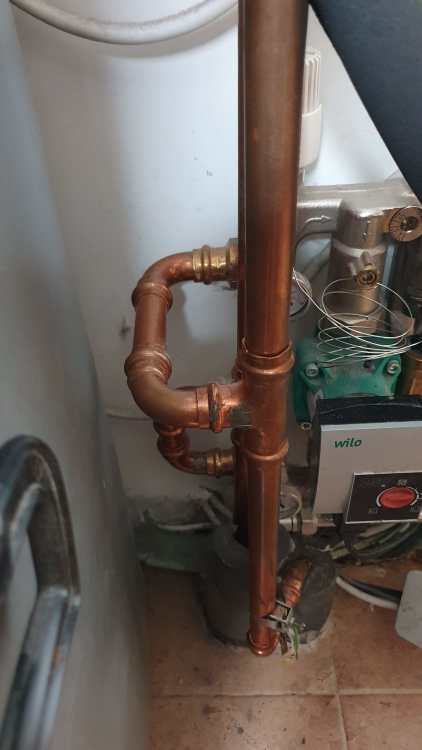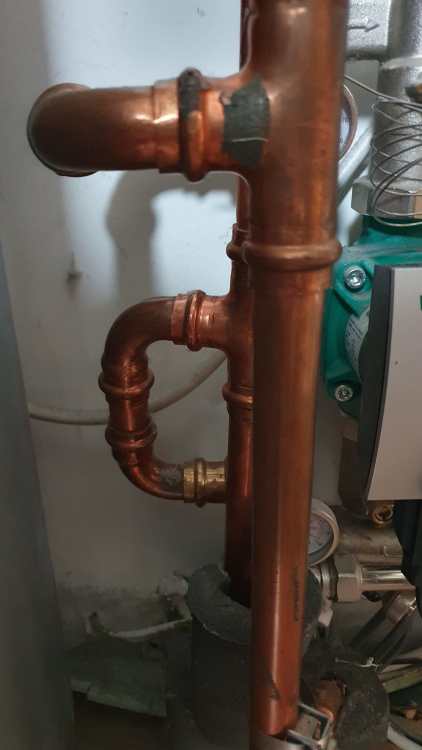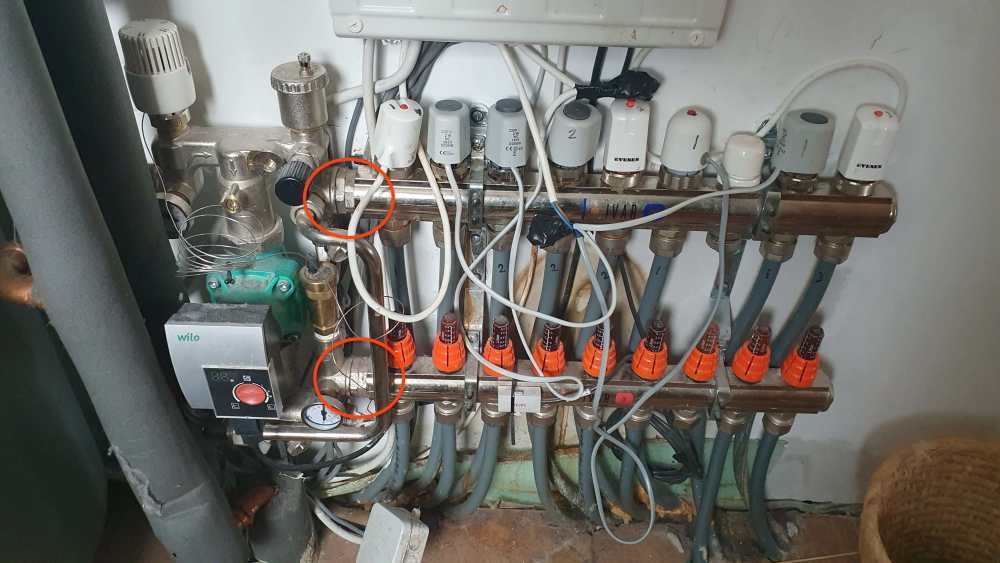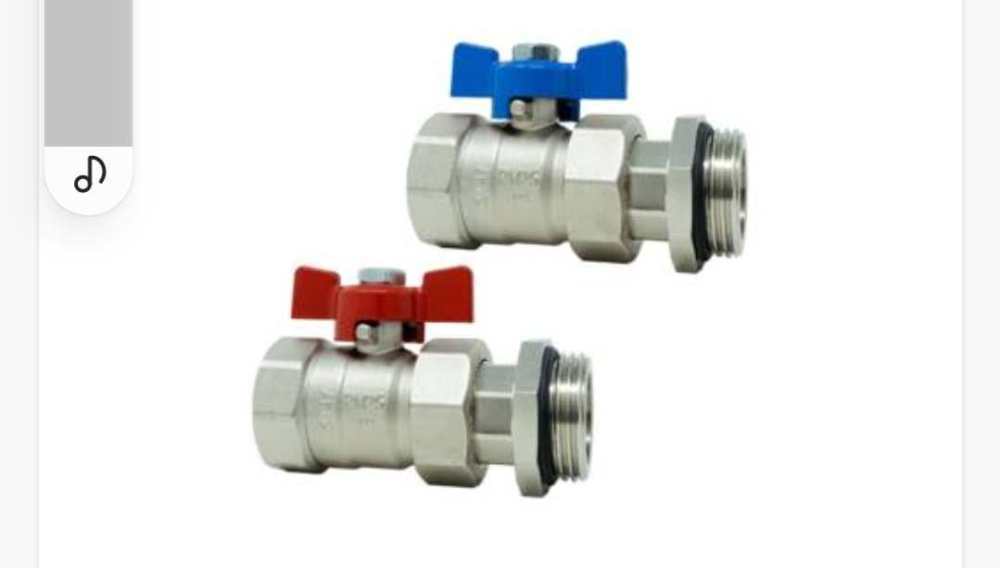
joeirish
Members-
Posts
48 -
Joined
-
Last visited
Personal Information
-
Location
Ireland
Recent Profile Visitors
The recent visitors block is disabled and is not being shown to other users.
joeirish's Achievements

Member (3/5)
0
Reputation
-
Some more photos of my setup and some questions. The photos show a close up of how the flow and return pipes from the boiler are connected to the manifold. Soldered connection at the pipe and compression connection at the manifold. Would it be possible to take these two sections off and install the 1/4 turn valves on these then reattach everything? Thanks.
-
I'll probably get a proper plumber to put in the new isolators. It'll likely mean some level of draining of the system before any pipes are cut. I'm sure that I'll have a few more questions before it's finished. Thanks guys for the advice so far.
-
So why wait until May 4th? Regarding you initial suggestion I was thinking that I'd just cut sections out of the existing pipes and insert the four valves so to speak? My idea of moving the manifold right would mean new isolation valves would be inserted where I drew the red circles on the photo so they wouldn't be behind the copper pipes. Maybe I misunderstood what your thinking is?
-
I don't. I was only thinking yesterday that maybe I need some sort of filter. Recommendations?
-
Yes the mix is because I had a few pin valve failures and the rust buildup under the actuators meant that some had to be replaced. Mostly good now except for a couple of recent failures. No idea why these pin valves have failed but plenty of inhibitor in the system these days so maybe not enough originally.
-
Nick thanks again. What i had been wondering was if I could insert isolation valves where I indicated in the attached. It would mean moving the whole shebang a bit to the right and I'm not sure if there is enought spare UFH pipe for that? There is one unused connection for an extra ufh loop (visible third from right) that I wondered if this could be utilised to help with moving it all rightwards?
-
Thanks. I understand now.
-
Got it. Our posts crossed.
-
Thanks for that. 1/4 turns? Do you mean something like in the attached photo? And would I need some sort of drain down valves on the manifold also (youtube suggested this to de pressurise the manifold once its isolated and to remove air once it's re pressurised).
-
Thanks for the quick reply. Here's another photo with the insulation removed. The whole manifold etc is connected to the flow and return from the oil boiler. The pipes continue up to the thermal store. Essentially the system is installed so that there is no separation between the ufh part and the heating circuit from the boiler to the thermal store. I realise that there is probably a better design but I'm where I am unfortunately. And it has worked for the past ten years except for the occasional pin valve failure.
-
I've not been here for a few years cos everything's been fine. But now I have a return of an old problem and with plumbers here in Co. Clare been rarer than hens teeth I'm trying to sort this myself. Our manifold has no isolation valves. One of the pin valves needs replacing but I don't know how to do this without isolation valves. So my thoughts are to install isolation valves etc so that I can do do any future work myself. Attached is a photo of my manifold. Any help appreciated. Thanks Joe
-
Finishing breathable membrane around door and windows
joeirish posted a topic in Garages & Workshops
So I've been building a garden office and need some advice on how to finish the breathable membrane around door and windows. I've now seen e different methods. An X cut out with the membrane then folded into the building on all four sides of the opening. An 'I' cut out with just the sides folded in and the flush edges taped at the top and bottom. And thirdly a flush cut out with the bottom edges under the fill taped and sealed then the other edges taped directly onto the window frame after it is securely attached. This last one to avoid dampness creeping into the inside under the membrane. Would appreciate views on which is the best method. Thanks. -
Exactly my problem. In my case for all the widow openings as well as the door. I found this interesting video online which gives a different viewpoint to others I've seen https://youtube.com/channel/UCRKjjDhP3w2lnx3csu3G3aw or look for DIYfferent on YouTube. I'd be interested in other views on this.
-
Nothing on Donedeal. So any advice on making my own insulated roof panels?
-
Thanks. Unfortunately the lead time on insulated panels is over 2 months (I live in Ireland) or excessive delivery costs if I buy from UK and even then all sorts of potential issues becasue of Brexit. I need to get the roof on in the next couple of weeks to protect the rest from rain. So I was kind of thinking could I just make my own insulated panels. I can get the cladding in the next couple of weeks and the PIR is readily available.






